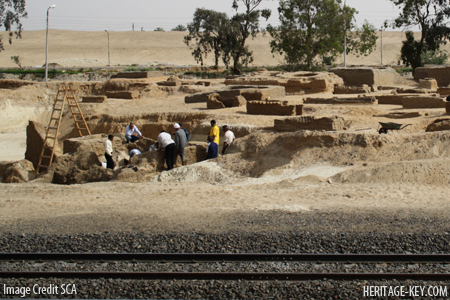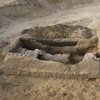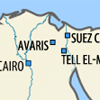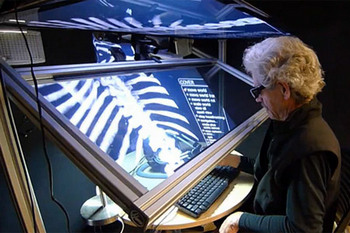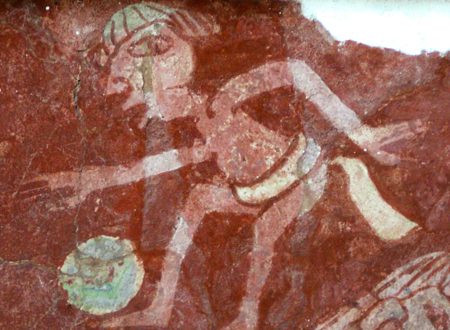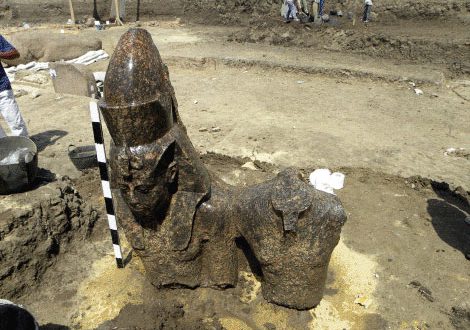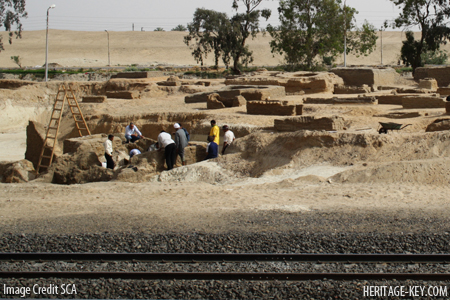 The first ever Ramesside period tomb has been found in Lower Egypt. The 3300-year-old tomb – belonging to Ken-Amun, a government official – has been discovered by an SCAmission at Tell el-Maskhuta. The excavations have also revealed 35 Roman tombs.
The first ever Ramesside period tomb has been found in Lower Egypt. The 3300-year-old tomb – belonging to Ken-Amun, a government official – has been discovered by an SCAmission at Tell el-Maskhuta. The excavations have also revealed 35 Roman tombs.
In a statement released by the antiquities council, Dr Zahi Hawass reported that the tomb is of very high quality, and beautifully decorated and inscribed with scenes known from the Ramesside Period. It dates to the 19th Dynasty (1315-1201 BC) and is constructed of mud brick and consists of a rectangular room with a domed ceiling made of stone, and a deep square-shaped shaft.
Inside the tomb a large limestone sarcophagus containing inscriptions on the inner and outer surface was found.
The tomb walls are decorated with scenes depicting the owner of the tomb and inscribed with the titles of the deceased, Ken-Amun, and the name of his wife, Isis. Ken-Amun was overseer of the royal records and Isis was a singer of the god Atum.
The ancient tomb is decorated in sunken relief with different religious and funerary scenes; the most important scenes are one from the Book of the DeadChapter 125, as well as one of women mourning the dead. Other important scenes include a depiction of the goddess Hathor in the shape of a cow, emerging from the Delta marshes, as well as a scene of the four sons of Horus.
Excavations will continue at the site, and conservation and restoration work will begin at the tomb. The discovery of this tomb will provide information about the history of the Delta and the geography of the area, as well as the relationship between this area and the eastern border of Egypt during the Ramesside period. This period encompasses the 19th and 20th Dynasty of Ancient Egypt. It is named after ‘Ramesses’ (one to eleven), the name taken by the majority of the rulers of Egypt dating to this period of time.
 In addition to this tomb, the excavation has found 35 tombs dating to the Roman Period, as well as a limestone stela inscribed with hieroglyphs containing the name of the Hyksos capital Avaris (near the modern city Tell el-Dab’a). The stela depicts the god Set in front of an unnamed 19th Dynasty King. The stela confirms the relationship between the site at Tell el-Maskhuta and Avaris.
In addition to this tomb, the excavation has found 35 tombs dating to the Roman Period, as well as a limestone stela inscribed with hieroglyphs containing the name of the Hyksos capital Avaris (near the modern city Tell el-Dab’a). The stela depicts the god Set in front of an unnamed 19th Dynasty King. The stela confirms the relationship between the site at Tell el-Maskhuta and Avaris.
Tell el-Maskhuta is located in the Wadi Tumilat near the eastern branch of the Nile that connects with the Suez Canal. When the Suez Canal was being constructed, many sphinx statues of Ramesses II were found. It is known that the ancient city at Tell el-Maskhuta contained a settlement in the Ramesside Period with a temple for Atum as well as a garrison, which stored supplies to equip the ancient Egyptian army before they went east to the border on their military campaigns.
Together with yesterday’s announcement of the 14 Graeco-Roman tombs discovered at the Bahariya Oasis, this brings the total to 49 Roman Tombs, one female Roman mummy and one Ramesside tomb in less than 48 hours.

